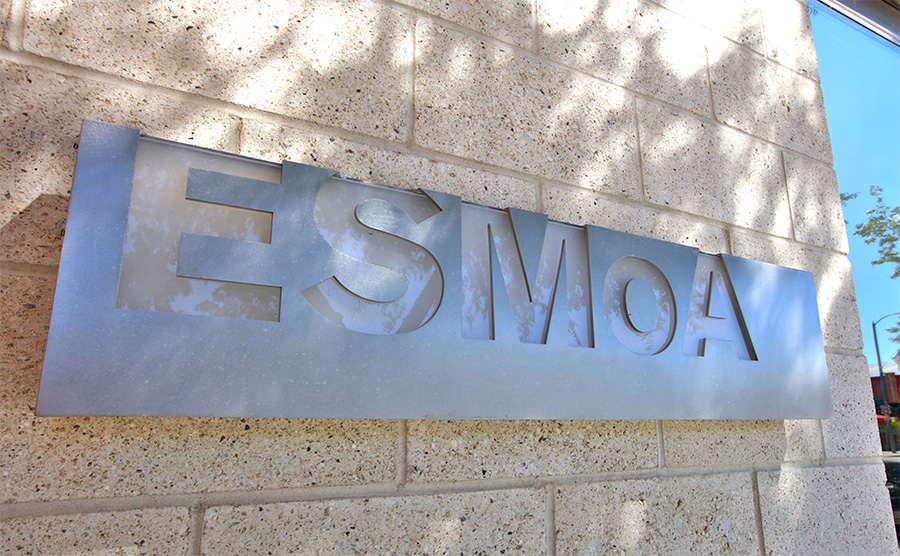
ESMoA continues to position itself as a cultural pillar in the South Bay and beyond.
When founders Brian and Eva Sweeney opened the doors of ESMoA in January 2013, their plans for it were fluid, and open to what might organically unfold over time. Nearly three years later, the slender brick building on Main Street in El Segundo has been home to countless creative offerings, from shows to educational programs enjoyed by people of all ages.
“We really exceeded our expectations,” says Brian Sweeney, sitting in the main exhibit space. “We came into this very naively, thinking we were going to build an art storage building, and that we’d open it a little bit to the public.”
Standout shows, or what ESMoA bills as “experiences,” have included one in partnership with the Getty Research Institute, where graffiti and tattoo artists blanketed the walls and floors as part of the Getty Graffiti Black Book launch, which kicked off with an opening night that brought approximately 900 people to ESMoA. Another landmark experience coming October 11 is Touch, photographer Jim McHugh’s portraits of major Los Angeles artists from the 1960s through today, which will also include rare Polaroids and original transparencies. This offering will include original works by artists who have posed for McHugh, notably David Hockney, whose 2005 painting The Photographer and his Daughter will be featured at ESMoA before it ships to the Tate for a planned Hockney retrospective.
“This place will be just jammed with art from the LA art scene,” says Sweeney. “I think it’s going to be a very inspiring and creative exhibition that’s well-received.”
“We have concentrated on having very strong exhibitions, the best exhibitions we can put out,” Sweeney notes. “And we’ve also concentrated heavily on an education program to involve the community—and the greater community of Los Angeles.” Passionate about the power of art to kindle creativity, in 2013 ESMoA reached out to El Segundo School District to offer an art program for its K-12 students.
“Thousands of kids came through our first year,” says Sweeney. The following year the program was expanded to reach other districts, including Long Beach, Hawthorne and Compton. (In some cases, ESMoA even provided bus transportation to shuttle students from their respective schools.) Beyond the K-12 program, ESMoA educational offerings range from summer camps and teen workshops to family days and drop-in life drawing classes. “And everything at ESMoA is free,” points out Sweeney.
The organizational structure at ESMoA can be described as open and collaborative. Such characteristics contribute to ESMoA being a place that can readily engage the untried and untested. A place that is receptive to exploring the inspired pathways that open up before it, and a place that takes risks. This can be seen in the little things—from forsaking the usual information labels placed next to displayed works, instead presenting the information via computer tablets mounted in the lobby, thus enabling works to be viewed in a more visceral and less-mediated way, to the idea of eschewing a rigid adherence to traditional staff hierarchies.
“It’s more like a circle of competencies,” explains Bernhard Zünkeler. “I would probably say I’m more the gardener of the whole place, but in the museum world you would probably say ‘curator.’”
The approach clearly works. ESMoA, in a short time, has come to be regarded as a creative force in the South Bay, and increasingly throughout Los Angeles. “The most exciting thing about this place,” says Zünkeler, “is that it’s a laboratory. There’s nothing right or wrong. For me it’s like Miles Davis when he said there’s never a wrong tone. It always depends on the next tone you are playing.”
“Everything is opening up other doors,” Zünkeler continues. “Sometimes those doors are for us, and sometimes those doors are for other people.”
ESMoA
208 Main Street, El Segundo, CA 90245
424.277.1020 | ESMoA.org
Photography by Paul Jonason